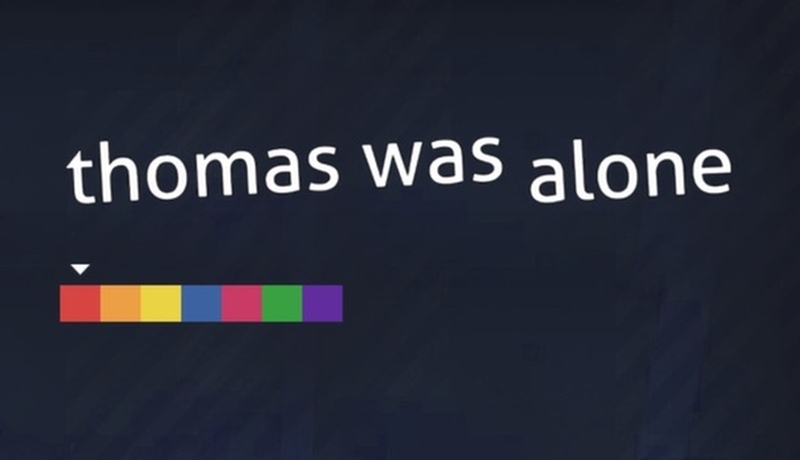
This article originally ran under a different banner/website in January of 2020 and is now being here re-uploaded for purposes of convenience and consolidation. Please enjoy.
HEAR YE!!! HEAR YE!!! My loyal followers, after playing Duke Nuke Forever, I, the Video Game Doomsayer, feel a bit burnt out on shooters. I recoil in disgust at the thought of regenerating health bars. I am irate at the idea of looking down an iron sight. I will be overjoyed if I don’t see another shotgun, assault rifle, or pea-shooting pistol ever again. No, I need a break from chipping away at bullet-sponge bosses with weak weaponry. With that in mind, I feel now would be a great time to dive into some platforming puzzles. The game I want to talk about today has been a game I have picked up many times but never finished. WELL, NO MORE I SAY, so I sat down and completed another game from my backlog. Today, I want to discuss video game auteur Mike Bithell’s first title, Thomas Was Alone.
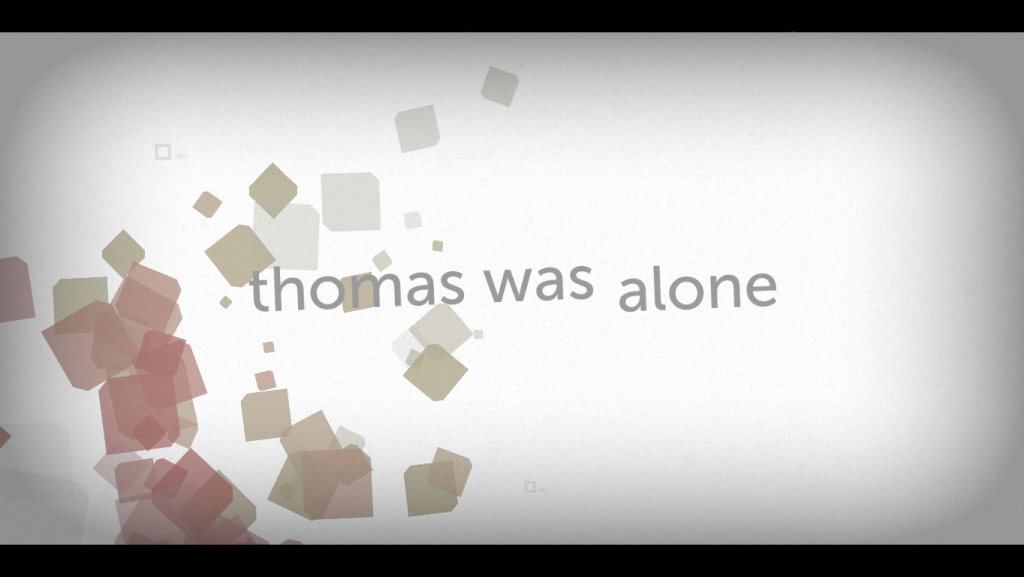
The word minimalist is often tossed around when talking about Thomas Was Alone. A fair criticism leveled at the gameplay. I am not accusing the game of having Duke Nukem Forever-levels of gameplay, but I am merely saying the gameplay is quite simplistic. The goal of each level is to direct various blocks to outlines that match the block’s shape. YOU WILL BE CONFRONTED WITH CHALLENGES SUCH AS LEDGES TO JUMP OVER, WATER TO TRAVERSE, AND SPIKES TO AVOID. Fairly standard puzzle platformer affair. However, what makes Thomas Was Alone unique, from a gameplay stance, is each square has exclusive properties. From various sizes, jump heights, buoyancy, and relations to gravity, Thomas Was Alone becomes a chess match with the level as you carefully plan out each move to reach the exits.
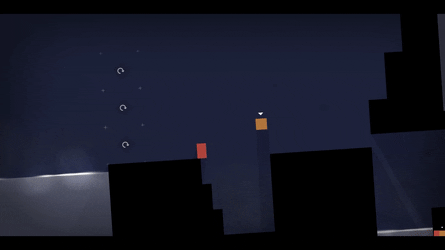
Initially, Thomas Was Alone has a rather straightforward start. One red rectangle and a couple of gaps between you and the exit. Then two rectangles, one with a smaller jump that you have to assist by using the other block as a ledge he can jump on. The difficulty curve smoothly levels out as you push through the levels acquiring more shapes. You’ll find yourself blazing through levels at a breakneck pace as solutions fall into place. At least until you reach the half waypoint. Maybe it might be me and my fragile mind, but the character whose gravitational pull is at the top of the screen utterly shattered my psyche. A simple path with rudimentary jumps became near impossible as my rectangle fell upward. I even considered flipping my TV to get through the levels. With this mechanic introduced, the pace of the game came to a crawl and my patience admittedly grew thin.
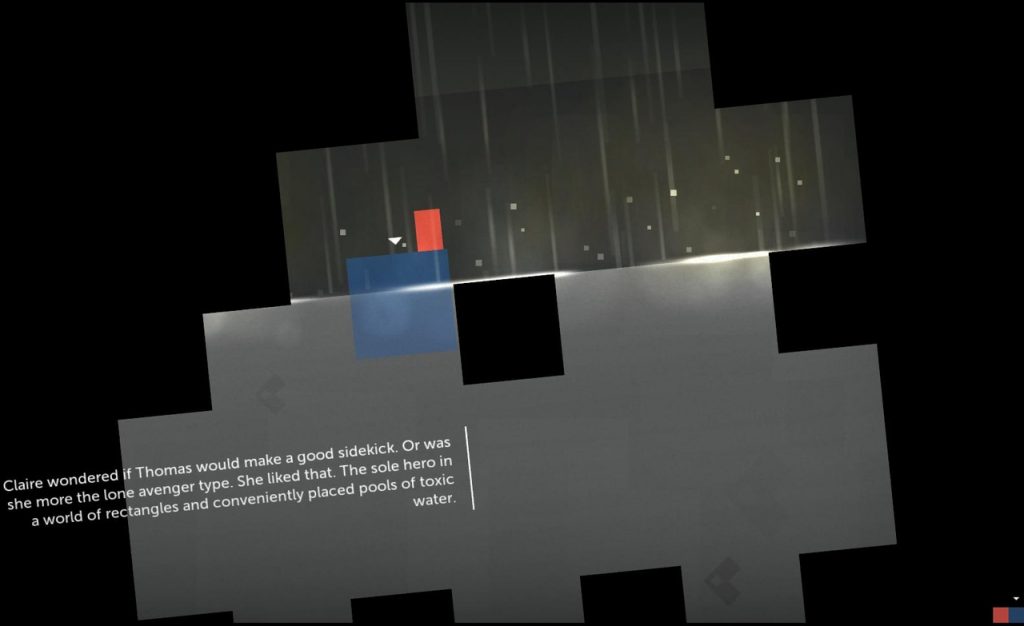
So with the gameplay being rather rudimentary and the random spikes in the difficulty curve, why am I pressing through Thomas Was Alone? The answer is elementary, my followers. Characters. Now, I see the bewildered look on your faces. DOOMSAYER!!! HOW CAN YOU HAVE CHARACTERS WITH SIMPLE GEOMETRICAL SHAPES? Yes, my loyal followers, Thomas Was Alone does something that many games in 2019 failed to do: make me care about their characters. With simple narration from Danny Wallace, we learn about the hopes, dreams, and worries of these seven blocks. With small opening text crawls, we learn that the small shapes are fragments of AIs, and the puzzles that we are trying to solve are basically programs designed to keep the AIs busy.
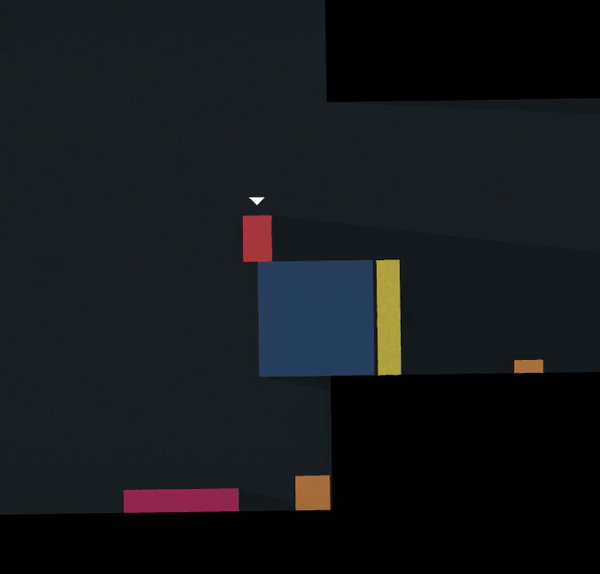
As we solve more and more puzzles, we are gradually introduced to our cast of characters. We have the optimistic red rectangle Thomas, who is generally happy being with others. Chris, the cynical small orange square, who thinks everyone is showing off when they leap over him. John, the tall narcissistic yellow rectangle, whose massive leaps make him think he’s performing for an audience. Claire, the massive blue square, who adopts a superhero persona upon discovering she’s the only one who can float in water. Laura, the small flat rectangle, often feels like everyone uses her since she allows others to bounce to higher heights. James, our self-conscious green square, originally was worried everyone would mock him for having gravity pull him towards the ceiling rather than the floor. Sarah, the small purple rectangle, has a bit of a God-complex that she adopted with her ability to double-jump.
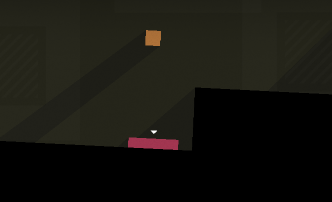
These characters are imperfect but that makes them more human than some of the other characters I have been asked to identify within 2019. Throughout their journey, they learn to overcome their differences. As we learn to use the taller blocks to help the smaller blocks, our characters learn to work as a team to help overcome their own differences. The characters grow and become more confident in their abilities. Watching these characters blossom was the real driving factor behind Thomas Was Alone. As the gameplay became tedious, I was able to gain the strength to press on as the characters gained the foresight to look past their flaws.
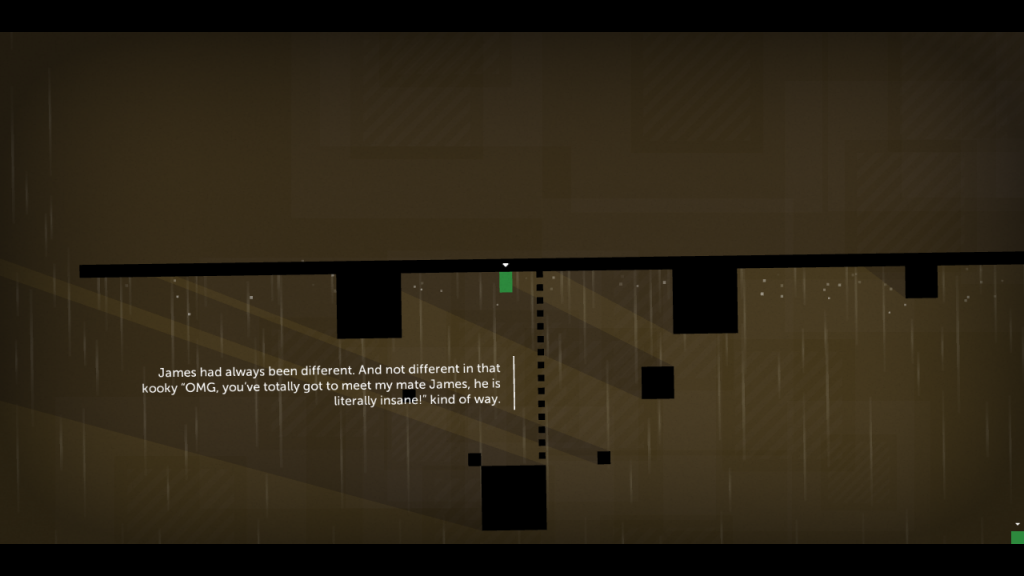
As I still reflect on the past year, I can’t help but recall all the weak cast of characters I was asked to control. From the unlikable teens in Man of Medan to the paper-thin twins in Wolfenstein: Youngblood, there seems to be an epidemic of lackluster characters in video games. Luckily, my followers, the cure is simple. Thomas Was Alone highlights how well video games tell stories while developing characters. I not only recommend Thomas Was Alone for any connaisseur of narration in games but I feel like more developers need to play Thomas Was Alone. My hope is if I herald Thomas Was Alone we can end the inexhaustible parade of lifeless characters. End the legion of half-baked protagonists. Deliver on characters who grow and have engaging arches. Thomas Was Alone will help bring stronger stories back to games.